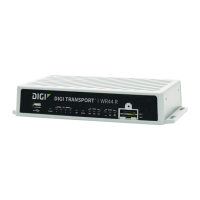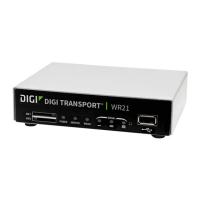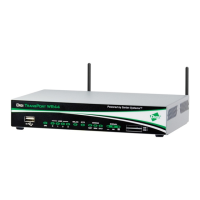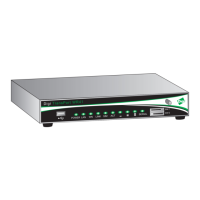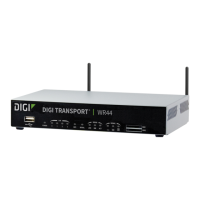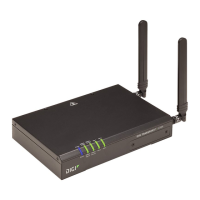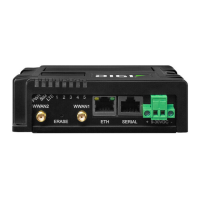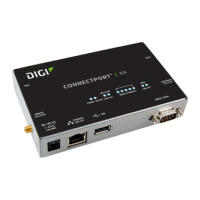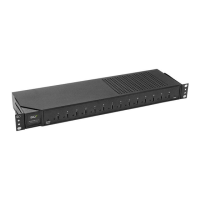Configuring legacy protocols Configure Protocol Switch software
Digi TransPort® Routers User Guide
674
Configure IP sockets to protocol switch
ÉWeb
1. Go to Configuration > Network >Protocol Switch > IP Sockets to Protocol Switch.
The IP Sockets to Protocol Switch page contains a table for entering a series of IP Port
numbers and X.25 Call strings, as shown below. It configures the router so IP data can be
switched to any of the protocols support by the protocol switch, including X.25. For example,
data received on a TCP connection can be forwarded over SSL, XoT, or a UDP stream. The only
columns that must be filled out are Port and Number of Sockets.
This table is duplicated in theConfiguration > Network > Legacy Protocols > X.25 > IP to
X.25 Callsection, as it can also convert an incoming TCP connection to an X.25 session to be
answered by PAD without using the protocol switch. It is included at this point in the web user
interface as a convenience, in case you are using the table with PAD and not the protocol
switch.
IP Port
Used to set up the port numbers for those IP ports that will listen for incoming connections to
be switched over X.25 or other protocol. In the case of switching to X.25, when such a
connection is made, the router makes an X.25 Call to the address specified in the X.25 Call
field. Once this call has been connected, data from the port is switched over the X.25 session.
Number of Sockets
How many IP sockets should simultaneously listen for data on the specified port. The number
of available IP sockets depend on your router model and how many are already in use. See
note at the end of these settings descriptions.
X25 Call
The X.25 call field may contain an X.25 NUA or NUI or one of the X.25 Call Macros defined on the
Configuration > Advanced applications > X25 > Macros page.
PID
The Protocol Identifier (PID) to use when the router switches an IP connection to X.25. The PID
(protocol ID) field takes the format of four hexadecimal digits separated by commas, such as
1,0,0,0, at the start of the Call User Data field in the X.25 call.
Confirm Mode
When set to On, the incoming TCP socket is not successfully connected until the corresponding
outgoing call has been connected. The incoming TCP socket triggers the corresponding
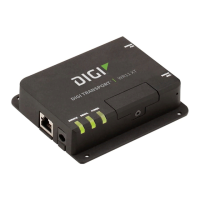
